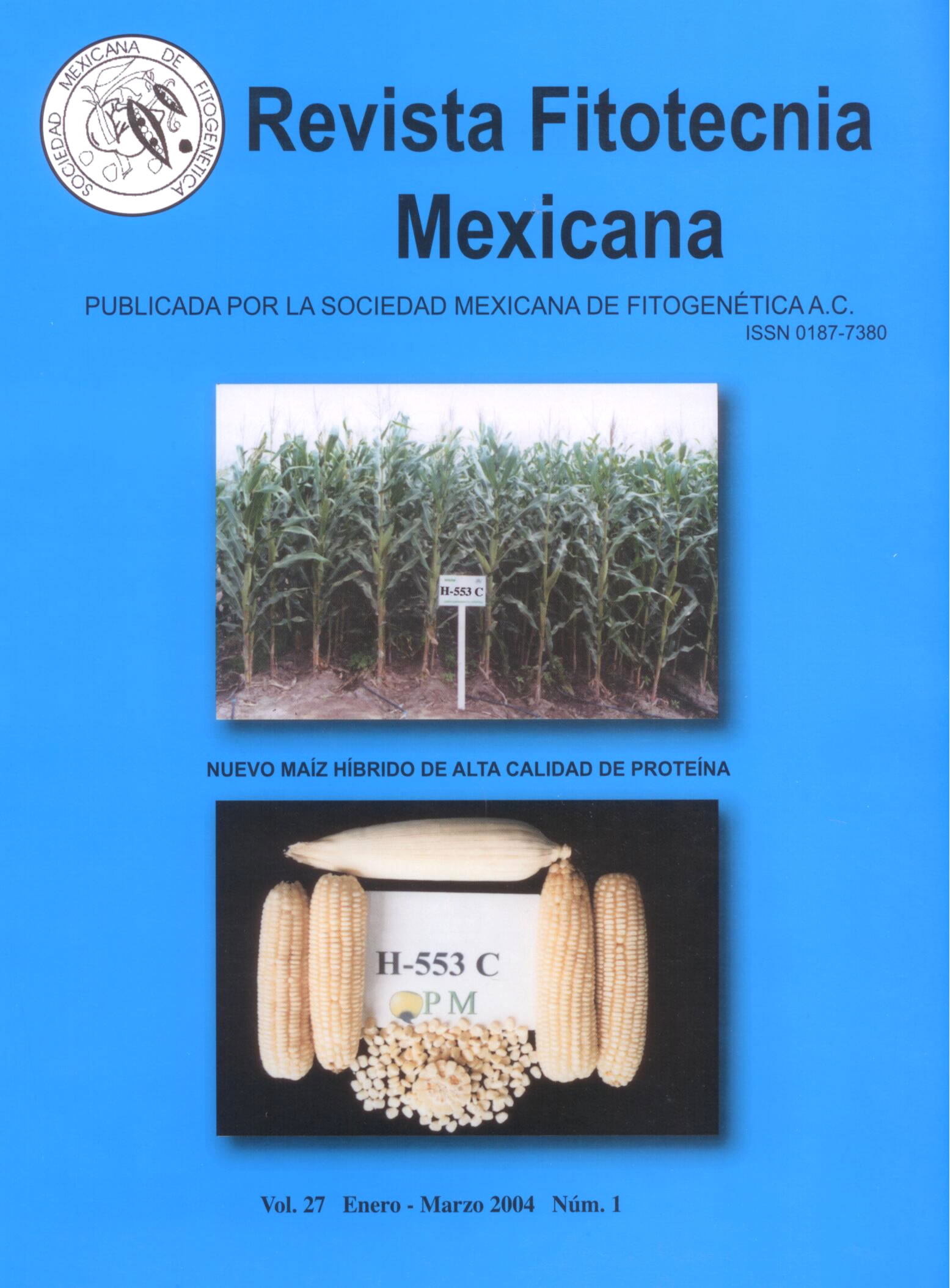MAIZE LANDRACES OF CHALQUEÑO RACE BLUE KERNEL. AGRONOMIC TRAITS AND SEED QUALITY
Main Article Content
Abstract
The differences in agronomic characteristics, grain yield and seed quality were evaluated in 24 landrace varieties of Chalqueño race blue maize (Zea mays L.), established during the Spring –Summer cycle of 2000, in Santa Lucía Coatlinchán and Montecillo, State of México. The experiments were conducted on an randomized block design with four replications. Tests to evaluate seed germination and vigor were conducted under laboratory and greenhouse conditions. Agronomic characters included days to tasseling and silking, interval between tasseling and silking, plant height, lodging, rotten ears, ears per plant and grain yield. The characters related to germination and seed vigor were 100 seeds weight, total percentage of germination at 7 d and seedling emergence after 6 d. Significant differences between
experimental sites were found for days to silking and rotten ears. Among genotypes there were significant differences for silking interval between tasseling and silking, rotten ears, ears per plant and grain yield. Highest grain yields were produced by varieties 13 (Pahuacán Ayapango, Méx.) and 22 (Cocotitlán, Méx.) with 5.1 and 5.4 t ha-1, respectively, whereas the hybrid H-139 produced 6.5 t ha-1. Regarding seed quality, varieties 11 and 15 resulted with the highest percentages of seedling germination after 4 d with 93 and 92 %, whereas for seed vigor H-139 had the best performance with 21.6 % of emerged seedlings after 6 d.

